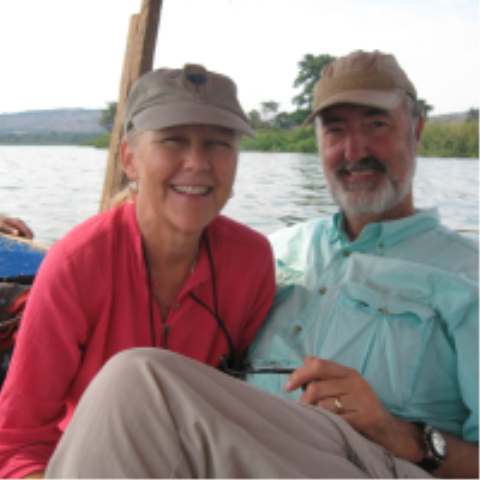I am Abraham Maper from Akot District. I am with my father
and brother, Jeff Deal, my Dr. Jeff Deal. I am telling you that this land is
our land. We welcome you. Since the year 2003 you came in and you did a lot
among our community. You support other students the orphans who have not able
to get the money for school. That is something interesting in my life alone.
Even if other people are not understanding what you are doing here, I myself, I
Abraham I appreciate that. And you came with a medical clinic. We went in the
bush and we spent a night outside in other areas. We faced difficulties as a
day. Also, I feel very good because you brought the foundation of our
development. We remember that you are the one who commit yourself to come to
start something that is difficult. That is something difficult for us to do it
by ourselves. Only God will send us to do it.
(Asks permission)
Yes, it is good for you to write down, that is something
that is very important. That is the foundation for next generation. And we
still remember you, that time you are the one who lead the team to come to let
God have the Christians that are there in America to contribute the money to
that something that is very important for the nation not ours.
(Asked permission for previous stories to be printed)
Yes, it is ok. That is good to write down all the Dinka
background and cultures to know more about Dinkas. And we like you to tell more
time to tell a lot Dinka culture to take them to share them with other brothers
and sisters there in America.
(What is this post ?)
This traditional Dinka belief. This is for the section
called Panyar. They brought this wood and they said it is the sign of the
traditional belief. They say that the nation is of he buffalo. That is why they
put the head of the buffalo as a picture on this tree to show them that this is
the section Panyar. And what the meaning that they make this, they say that
this Buma, that this road start out from Akot to Paloic to let everybody know
that this road is going up to to Paloic. That is why they take this wood and
they set it down. It is a traditional belief. This the head of cow. It meaning
that the Dinka they trust the cow is their resources to keep their children.
And this the head of buffalo, the meaning of this head, they say they are related.
They said that they related to Panyar and Paynar is the name of buffalo. The
name Panyar came out of Anyar.
(Your clan has a tree as the symbol).
Yes, that is a tree called Raol is related to another clan
called Aneet.
(This girl is carrying leaves)
That little girl they went to collect that green leaf for
making broth or stew for Dinka. They use vegetable to make it for food.
The land around Akot is belong to our section, Nyeii. This
area of Akot is a very lush area. Yes, very lush area. Even other place say no
man land. This a very good land to welcome you without fear. If you come we
will give you land and do whatever you like.
(Do you have fields )
The fields. Yes. I have it. My field is outside in another
place called Tina Machock. That is a place of my father. The land of my father.
My father is buried there. You know that place. That is my home. (Laughing).
You know my home. That is the place where my father home is there. I like that
place also when God bless me I am supposed to help somebody building in a
permanent place.
(Who takes care of the fields?)
No one planting for me. We grow food for ourselves. Even me
I cultivate. I, myself and my brothers. Yes my younger brother and I work
together on the land. We have our own house in another place Mai Coldit.
No planting yet. This is not the season for cultivating. Is
too dry. That land is too big and I am bordering with other people there is a
demarcation of that house and that house. You have something like a spear and
we don’t know how much of the land because we don’t have a measure, we don’t
measure the land.
Another field is going like that (gesturing) those tukels.
(250 meters). Is going like that house of Sawat and other side this like that
tree on the ground. Yes. That is one plot and around my home area.
(How many families are using food from that land?)
My wife and three kids. My younger brother. My mother. And
my sister living together with me with her three daughters, Martha as you know.
She is a hard worker like your family.
Yes, he (younger brother) is in the process of getting
married. We didn’t have many cattle. Last year many of my cattle died and we
still don’t have the number. They died because of a cow sickness. I don’t know
what it was.




